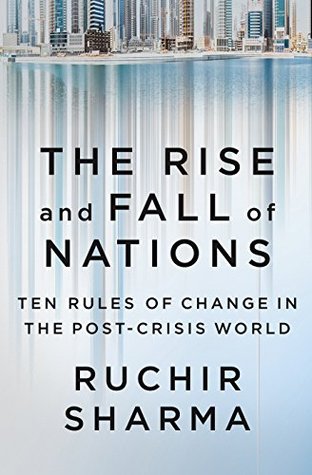More on this book
Community
Kindle Notes & Highlights
Read between
December 8 - December 31, 2020
as a share of GDP, construction had fallen from more than 30 percent in 2008 to 20 percent.
Dubai has in fact prospered more than its oil-rich neighbors by turning itself into their regional headquarters for shipping as well as travel, information technology, and financial services.
Over the decades Dubai has become home to the largest Iranian expat community outside the United States, with 450,000 residents and branches of ten thousand Iranian businesses, all linked to Iran by two hundred flights a week.
In Brazil, trade has been stuck for decades at around 20 percent of GDP, the lowest level of any country outside deliberately isolated outliers like North Korea.
China and India, and smaller even than populous commodity economies like Russia and Indonesia, all of which have a trade share of GDP that is close to or above 40 percent.
flows of goods amount to about $18 trillion a year, significantly greater than flows of both services and capital, which account for about $4 trillion each.
Vietnam has surpassed its much richer and more developed neighbors like Thailand and Malaysia as Southeast Asia’s leading exporter to the United States.
cheap currency, reasonably inexpensive labor, and a rapidly improving transportation network.
The European Union began with six members; it now counts twenty-eight. The Association of Southeast Asian Nations began with five members; it now has ten.
Around 70 percent of exports from European countries go to neighbors on the same continent, and in East Asia and North America, the figure is 50 percent. At the opposite end of the spectrum, in Latin America, the figure is 20 percent, in Africa it is 12 percent, and in South Asia just 5 percent.
Meanwhile trade between the Southeast Asian economies and China has exploded, rising by an average of 20 percent a year for the last twenty years.
It takes on average nineteen days to ship goods in from Singapore, 4,500 miles away, but twenty days to truck the same goods 300 miles down the road from the port at Mombasa to the capital in Nairobi. And Kenya has a $60 billion economy; in the many African nations where GDP is under $10 billion, outsiders often see even less reason to bother trying to surmount these obstacles.
Bangladesh is attracting much more textile production than India because it offers fewer bureaucratic hurdles.
Building roads in the steep Colombian mountains can cost $30 million per kilometer, roughly twenty five times more than in rural areas of the United States, which is why 90 percent of the country’s roads are unpaved.
which is why the ideal level of investment is capped at roughly 35 percent of GDP.


